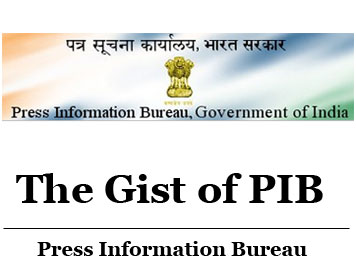The COVID-19 fiscal response and India’s standing(The Hindu)
Mains Paper 3: Economy
Prelims level: COVID-19 Economic Stimulus Index
Mains level: Indian Economy and issues relating to planning, mobilization of resources, growth, development and employment.
Context:
- How does India compare in the quantity and quality of its COVID-19 response to other developing countries?
- We analyse India’s fiscal response drawing on the International Monetary Fund Policy Tracker, the COVID-19 Economic Stimulus Index (CESI) of Ceyhun Elgin at Columbia University, and the World Bank.
MEASURES ANNOUNCED:
- Before the announcement of the Atmanirbhar Bharat package, India lagged significantly behind comparable developing countries that are similar in GDP per capita, state capacity, and structure of the labour force.
- As of early July, the gap seems to have narrowed.
- However, given the blurring of the distinction between fiscal and monetary components, ensuring comparable and accurate figures for fiscal responses is a challenge.
- For example, the total Atmanirbhar package is billed at 10% of GDP.
- The headline number for India’s fiscal response in international databases is around 4% of GDP.
- The new fiscal outlay, including the Pradhan Mantri Garib Kalyan Yojana, of March, the direct fiscal aspects of Atmanirbhar Bharat, and the latest extension of free rations under the Public Distribution System, is around 1.7% of GDP.
- The one significant demand-side intervention in the Atmanirbhar Bharat package was ₹40,000 crore of additional outlay for the Mahatma Gandhi National Rural Employment Guarantee Act (MGNREGA).
- Most other demand-side measures involve the frontloading, consolidation, or rerouting of existing funds.
- For example, the recently announced ₹50,000 crore Garib Kalyan Rojgar Abhiyan, which consolidates projects of 12 ministries/departments.
Stringency:
- On the other hand, India has surpassed almost all others in the stringency of its containment measures.
- As a result, the extent of relief measures does not seem to be commensuratewith the economic disruption and dislocation caused by the severity of the lockdown.
- Vietnam, Indonesia, Pakistan, and Egypt, all while averaging less stringent measures than those in India, have announced stimulus measures that are as large or more substantial, as a share of GDP.
On Cash Transfers:
- Demand-side interventions announced by other developing countries could provide lessons for additional measures in India.
- Unsurprisingly, cash transfers constitute the largest category of support.
- The World Bank reports that, on average, such transfers amount to 30% of monthly GDP per capita, reaching 46% for lower-middle-income countries, for an average of three months.
- Countries have also significantly expanded coverage of their cash transfer programmes from pre-COVID-19 levels; Bangladesh and Indonesia have increased the number of beneficiaries by 163% and 111%, respectively.
- Indonesia’s cash schemes now cover more than 158 million people (or 60% of the population).
- It has even created two new unconditional cash schemes to reach 20 million individuals in urban and rural settings excluded from the current social protection measures.
- India could take these actions into account in decisions about expanding existing transfer programmes or even creating new ones.
Enhance NREGA:
- Of the World Bank’s list of 621 measures across 173 countries, half were cash-based.
- Most of the rest related to food assistance (23%) or waiver/postponement of financial obligations (25%).
- Only 2% related to public works, a clear indication of the popularity of cash transfers over public works for income support, perhaps in part due to concerns over physical distancing.
- One example of the latter is Mexico, which announced an enlargement of its rural permanent employment scheme to 200,000 farmers and beneficiaries.
- Indonesia has allocated more than $1 billion (more than ₹7,000 crore) to fund public works schemes that will benefit at least 600,000 workers.
- Additionally, the Indonesia central government has directed village authorities to focus their budgets on a cash-for-work programme for day labourers and the unemployed.
- India has been a leader in employment guarantee policies with its flagship MGNREGA programme.
- This is the right time to expand entitlements in this programme as well as introduce an urban version of the programme, as many have called for.
Steps in the developing world:
- Developing countries are resorting to drastic means to finance COVID-19 responses.
- Actions so far include the amendment of legal budget limits and the enhanced issuance of bonds — including a ‘pandemic bond’ by Indonesia.
- One set of measures has been particularly notable: central banks in many emerging economies are experimenting with purchases of public and private bonds in the secondary market (quantitative easing) or directly purchasing government bonds on the primary market (monetising the deficit).
- Although the Reserve Bank of India has been buying sovereign bonds on the secondary market in India, the debate continues over whether the Indian government should invoke the “escape cause” in the Fiscal Responsibility and Budget Management (FRBM) Act, to enable the central bank to directly finance the deficit.
- Indonesia and Brazil have both amended laws to allow their central banks to buy government bonds, which the Indonesian central bank is doing in the primary and secondary markets.
- At the same time, the Philippine central bank has also bought $6bn (₹42,250 crore) worth of government bonds under a three-month repurchase agreement that is extendable after three months.
- In India, one reason for the subdued fiscal response and the resort to monetary measures is likely a concern with the debt-to-GDP ratio, which is higher than for most countries in our set.
- However, aggregate demand and confidence in the economy have slumped and may not recover for many months.
Conclusion:
- Additional fiscal outlay — in the form of cash and in-kind transfers and expanded public works schemes — would save lives and jobs today and might prevent a protracted slowdown.
- Not spending more now, therefore, might only worsen the debt-to-GDP ratio if growth remains depressed.
Online Coaching for UPSC PRE Exam
E-Books Download for UPSC IAS Exams
General Studies Pre. Cum Mains Study Material
Prelims Questions:
Q.1) With reference to the Green Railways, consider the following statements:
1. Indian Railways is working to harness the potential of 500 Mega Watt (MW) energy through roof top Solar panels (Developer model).
2. Indian Railways has also acquired Green Certification from CIII to all Production Units (PUs) and Workshops.
Which of the statements given above is/are correct?
(a) 1 only
(b) 2 only
(c) Both 1 and 2
(d) Neither 1 nor 2
Answer: A
Mains Questions:
Q.1) Highlights the economic impact of COVID-19. How does India compare in the quantity and quality of its COVID-19 response to other developing countries?




